Painted Houses of Charleston
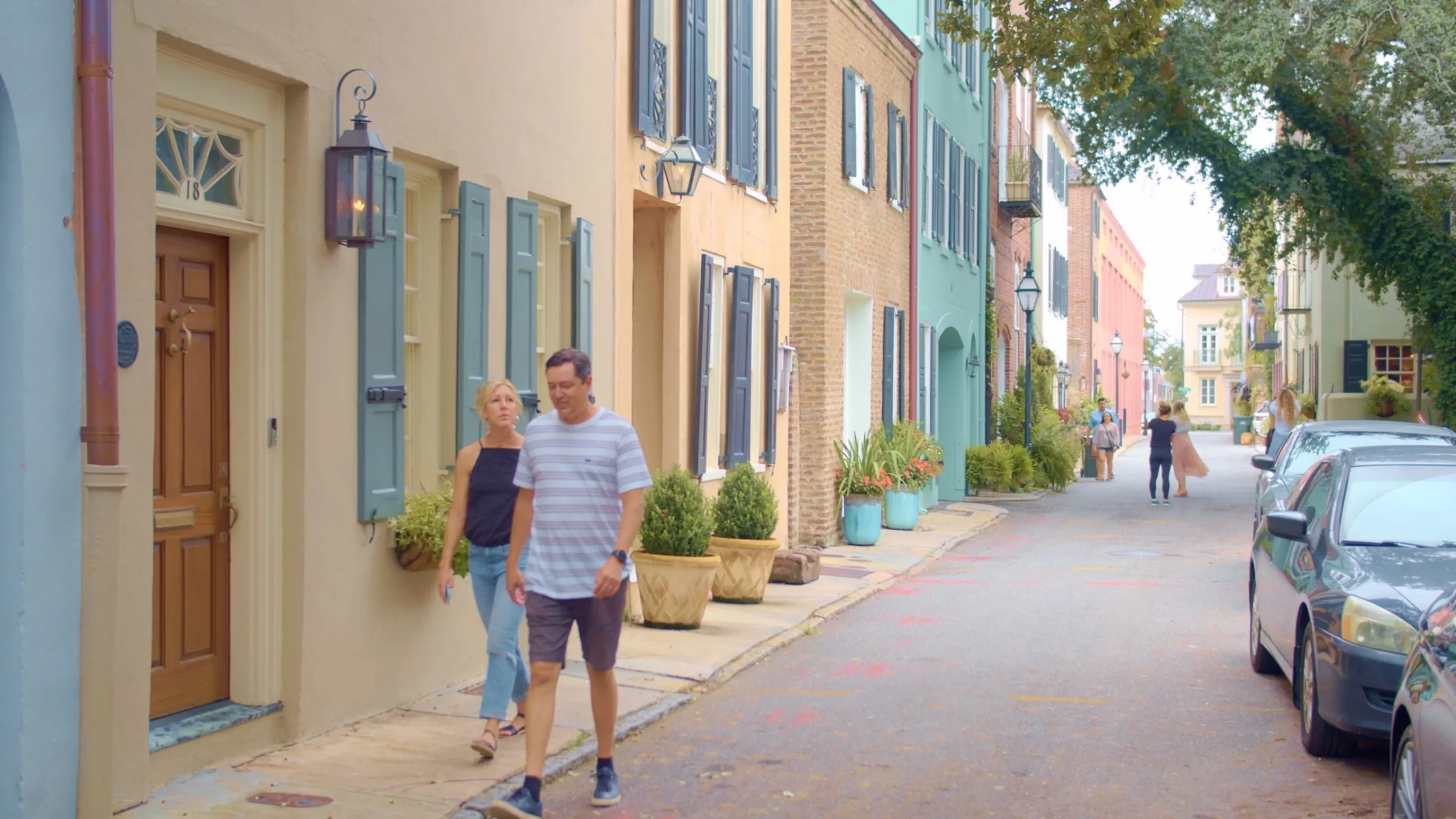
Charleston is full of pastel-colored buildings, making it one of the most beautiful cities in the South.
Although not all of the painted houses of Charleston were painted for the same reasons, the result is the same: beautiful structures that create a stunning backdrop for one of the most historic cities in the Lowcountry.
Discover Charleston’s painted houses, as well as the meaning behind its many colors.
Colors of Historic Charleston
There are several colors of historic Charleston you’ll see in practically every neighborhood. That’s because these colors originated in the Lowcountry. It’s no wonder that Charleston is such a colorful city!
The most common historic Charleston colors include haint blue, Charleston green, verdigris green, and yellow ochre.
If you sign up for our Alleys and Hidden Passages Tour, you’ll see many of these common Charlestonian colors.
Haint Blue
One of the most auspicious colors you’ll see in Charleston is haint blue, which is more of a blue-green or seafoam green than a true blue.
This hue of blue is commonly found on porch ceilings in the Lowcountry and comes from the Gullah Geechee traditions. It’s supposed to protect the house from evil spirits (which is why you’ll find it most commonly on front porches).
It can also allegedly act as a natural bug repellent.
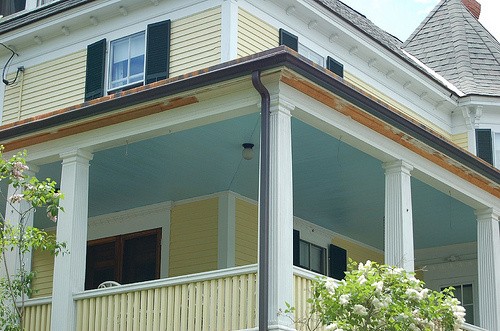
Haint Blue Porch Ceiling – Photo by Jocelyne Deneau
Charleston Green
Another color you’ll see commonly on Charleston painted houses is Charleston green. This color is often mistaken for black but is more of an off-black, mixed with green and yellow.
During the era of Reconstruction in the South, the federal government provided cities with black paint. As legend has it, locals took this black paint and added green and yellow paint to make the city a little more cheerful.
Charleston green looks more like a dark green or forest green and is still used around the city today.


Verdigris Green
Another Charlestonian color is verdigris green, which some people refer to as “true Charleston green”.
Although this hue of green has been turned into a paint color, it’s not paint that lent this particular shade of green to Lowcountry structures.
Instead, it’s due to a patina effect that occurs when metals are exposed to salt water.

Yellow Ochre Limewash
The final color you’ll see on painted houses of Charleston is yellow ochre limewash. Like verdigris green, this color is created by a chemical process.
Homes with this yellow ochre have been covered with limewash. The limewash is absorbed into the wall instead of sitting on the surface, as paint does. These homes have a yellow-ochre hue that seems to glimmer.

Painted Houses of Charleston
When people refer to the “painted houses of Charleston”, they’re almost referring to the homes on what we now call “Rainbow Row” which is located in Charleston’s French Quarter.
But did you know that there are painted houses all over Charleston?
In addition to the homes on Rainbow Row, houses with colorful exteriors, including shutters, porches, and doors, are found on almost every street in the Holy City.
Telling stories about these homes is one of our favorite things to do in Charleston. Here are a few of our favorite Charleston painted houses.
Rainbow Row
The most famous painted houses in Charleston are the ones on Rainbow Row, which is located on East Bay Street.
Although these homes were not originally painted in such joyful colors, they will probably remain the same hues for at least decades to come — thanks to their popularity with locals and visitors alike.
Dorothy Legge House: This pastel pink home at 99-101 East Bay Street was the first on the row to be painted — all thanks to Dorothy Legge, who updated the color first in 1931.
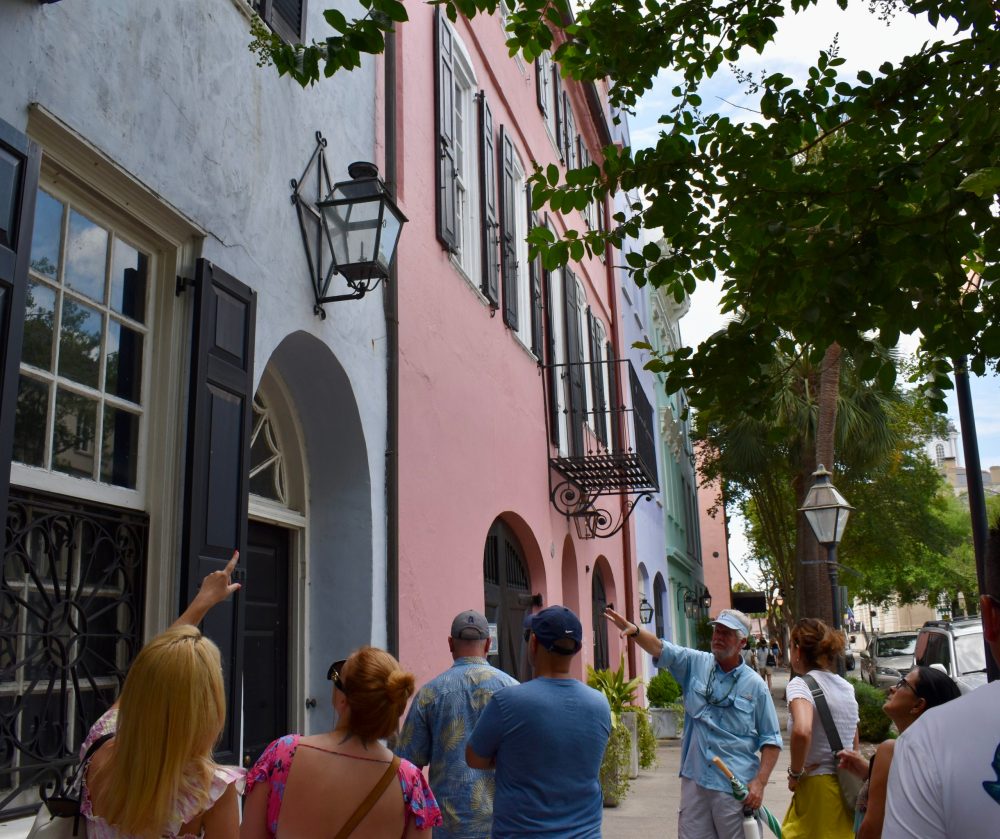
A Walks of Charleston tour group on Rainbow Row
William Stone House: This home at 83 East Bay Street was once owned by a Tory merchant. It suffered damage from a fire and fell into disrepair before it was purchased in 1941 and renovated by Susan Pringle Frost.
James Gordon House: This home at 87 East Bay Street was also partially destroyed by a fire and restored by Susan Pringle Frost in 1920.
Deas-Tunno House: This baby blue home at 89 East Bay Street was built in 1770 as a commercial building and is one of the few homes on Rainbow Row to feature a small yard.
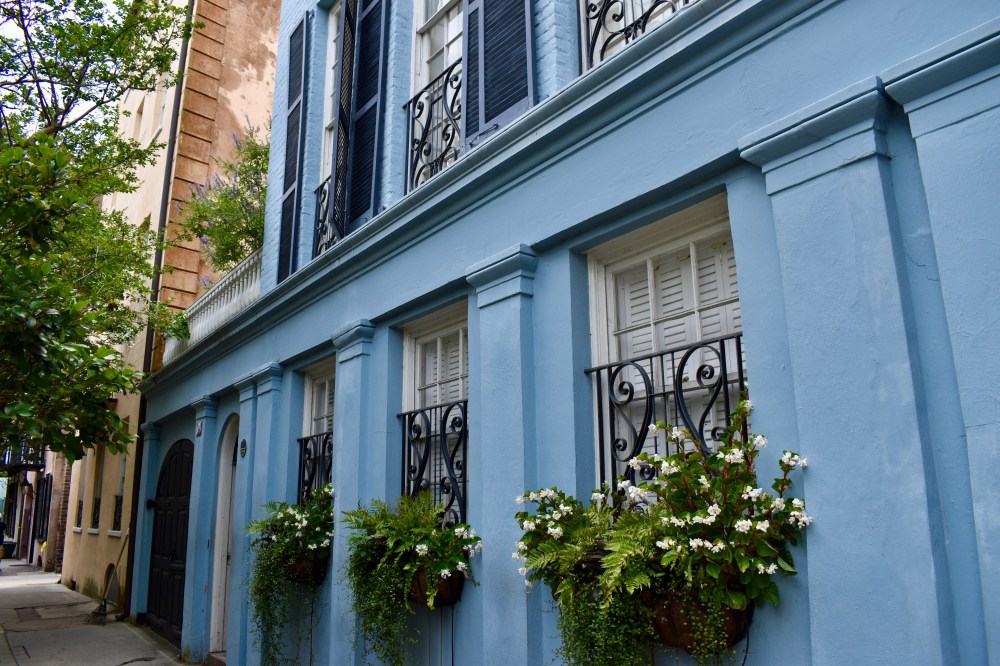
Deas-Tunno House
James Cook House: This bright-yellow home at 93 East Bay Street was built in 1778 as a commercial space.
Charleston’s Pink House
Even though the Pink House wasn’t originally a painted house in Charleston, we’d be remiss if we didn’t mention this structure.
Built in the late 1600s or early 1700s, the Pink House is one of the oldest buildings in Charleston — and possibly even the oldest.
As its name suggests, it is indeed a “pink house”; yet, unlike the other homes on this list, the Pink House wasn’t painted pink!
Instead, it was constructed with pink materials, specifically Bermuda stone, which has a naturally pink hue.
To preserve the structure, the house was covered in stucco and painted pink.
So, while technically, the pink house was not originally painted pink, today, its color is enhanced with pink paint to ensure it lives on for future generations.
If you want to know more about the Pink House, we happen to pass by it on our Charleston History Tour.

The Pink House
Other Painted Houses of Charleston
All Charleston historic homes are steeped in history, but not every structure has been transformed into a museum or space for the public.
These Charleston painted houses can only be enjoyed from their exterior, as they are private residences — but they are wonderful examples of the historic colors of Charleston.
Michelmann-Michel House, 25 Sires Street: A private residence with a great example of haint blue paint is this home on 25 Sires Street.
The door is painted a bright blue and the porch ceiling is painted that tell-tale light haint blue, commonly believed to ward off evil spirits.
Built between 1855 and 1856, it was originally owned by Henry Michelmann, who was a carpenter.
Since this is a private residence, we ask that you treat it with respect and enjoy the typical colors from across the street, careful not to disturb the residents.
Speaking of homes in the Holy City, Walks of Charleston was recently featured in the Redfin blog! You read all about why we believe Charleston is one of the 10 best places to live in South Carolina.
43 Meeting Street: This bright yellow house’s shutters are a great example of Charleston Green. You can see that the color is a dark green that’s not quite black.
Originally built in 1820, this structure is another private residence and is best enjoyed from across the street.
95 Broad Street: This structure, which is the color of a deep-orangey ochre, is a great example of limewash.
The Major Peter Bocquet House, built around 1770, is one of the most commonly photographed and painted homes in Charleston.
Although the house dates back to the 18th century, the limewash is relatively new—only about 25 years old. The owners of the structure, a local real estate company, renovated the interior and exterior, giving it a fresh coat of limewash.
These houses aren’t featured on any of our public tours, but if you’re interested in the painted houses of Charleston, we can always create a private tour that includes any homes you want to learn more about!
